Matthew J Poes
AV Addict
Thread Starter
- Joined
- Oct 18, 2017
- Messages
- 1,903
As I’ve mentioned in the past, I’m heavily treating my room. Along the way I’m learning a lot about the practical implications and limitations created by certain decisions. Typically when I acoustically treat a room it’s designed to serve a single purpose (For me that’s often speech intelligibility).
For music I’ve always liked a livelier room, especially if I’m actually playing music myself. For movies, clarity rules the day. These are opposing forces. Clarity is defined as the ratio of early to late energy in a room, and in general we want to see rooms with RT60 Times well under half a second. With music we may prefer a room that is anywhere from .4 seconds up to near a full second. How lively really depends on the room size and if that reverberation includes objectionable reflections such as flutter echo.
So what do you do in your own home with dual needs. Listening to music in a natural sounding room, and watching a movie where we want to be transported to the movie, not our room.
Music should sound like the performance is in your room. You aren’t looking to be transported to the live event typically because the live event was an artificial creation in the studio.
With movies we want to be immersed in the movie and transported to the events in the movie. Our room just causes distractions from that.
Here is a great measurement for a movie only room.


These won’t sound bad with music but the room won’t add any ambience of its own. It may sound unnatural, especially if it’s a very dry studio recording.
The nice thing about room acoustics is that once it’s very dead it can easily be livened up. Studios change the acoustics of their rooms all the time.
Here are some example products:

This is a diffuser absorber that can be transformed from diffuser to absorber with a lever. It works by having a screen and a baffle. If a screen has an airspace it will absorb sound.

This is a kind of binary diffuser using a modified MLS pattern that changes both width and height. This is added to the front of a absorber and actually relies on absorber to function.

This is a slat absorber that offers spatial diffusion. This also is added to the front of a absorber.

This is a tunable bass trap and while not designed to change a room, it too would have a similar ability to transform a rooms sound. While the idea is to zero in on a mode, you would also change a rooms warmth (bass decay to treble decay ratio).
Finally the famous tube trap.
The ASC tube trap is a bass absorber that can be rotated so that it either absorbs or reflects mid and high frequencies. The crossover frequency is tunable by ASC during manufacture. You could have a multitude of these with different tuning and rotating them would change a rooms characteristics.
For music I’ve always liked a livelier room, especially if I’m actually playing music myself. For movies, clarity rules the day. These are opposing forces. Clarity is defined as the ratio of early to late energy in a room, and in general we want to see rooms with RT60 Times well under half a second. With music we may prefer a room that is anywhere from .4 seconds up to near a full second. How lively really depends on the room size and if that reverberation includes objectionable reflections such as flutter echo.
So what do you do in your own home with dual needs. Listening to music in a natural sounding room, and watching a movie where we want to be transported to the movie, not our room.
Music should sound like the performance is in your room. You aren’t looking to be transported to the live event typically because the live event was an artificial creation in the studio.
With movies we want to be immersed in the movie and transported to the events in the movie. Our room just causes distractions from that.
Here is a great measurement for a movie only room.
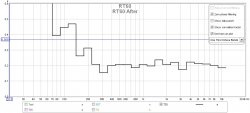
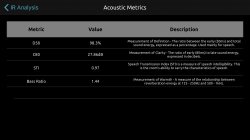
These won’t sound bad with music but the room won’t add any ambience of its own. It may sound unnatural, especially if it’s a very dry studio recording.
The nice thing about room acoustics is that once it’s very dead it can easily be livened up. Studios change the acoustics of their rooms all the time.
Here are some example products:

This is a diffuser absorber that can be transformed from diffuser to absorber with a lever. It works by having a screen and a baffle. If a screen has an airspace it will absorb sound.
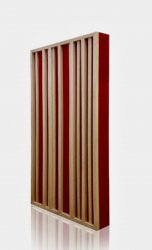
This is a kind of binary diffuser using a modified MLS pattern that changes both width and height. This is added to the front of a absorber and actually relies on absorber to function.
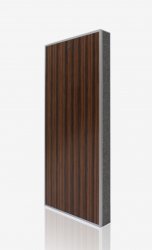
This is a slat absorber that offers spatial diffusion. This also is added to the front of a absorber.
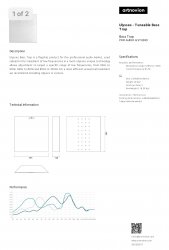
This is a tunable bass trap and while not designed to change a room, it too would have a similar ability to transform a rooms sound. While the idea is to zero in on a mode, you would also change a rooms warmth (bass decay to treble decay ratio).
Finally the famous tube trap.
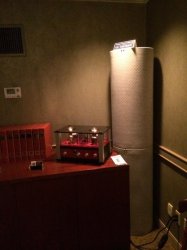
The ASC tube trap is a bass absorber that can be rotated so that it either absorbs or reflects mid and high frequencies. The crossover frequency is tunable by ASC during manufacture. You could have a multitude of these with different tuning and rotating them would change a rooms characteristics.










